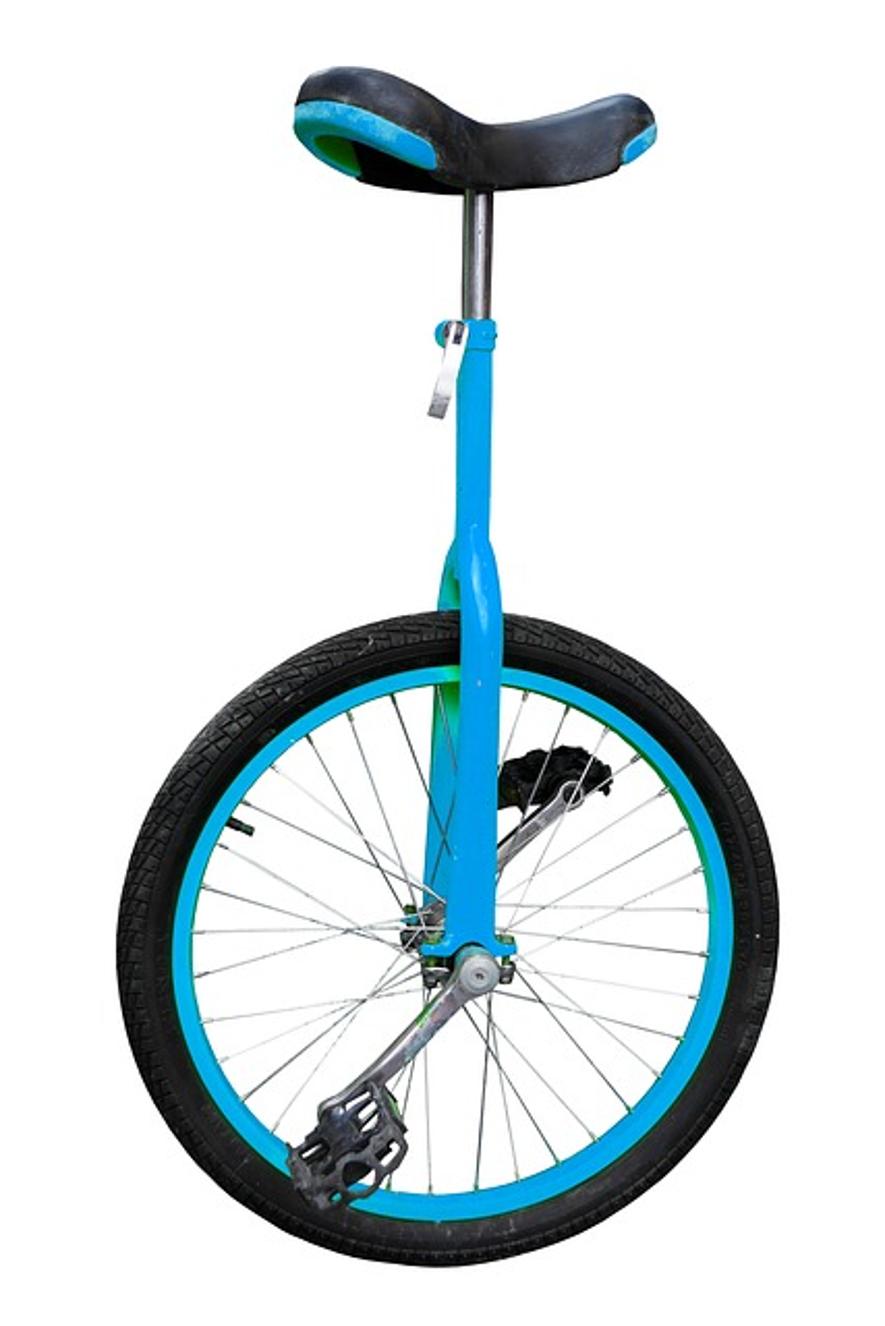Introduction
A unicycle is a fascinating and unique vehicle with a history that sparks curiosity. Unlike a bicycle or tricycle, a unicycle has only one wheel, which means the rider must balance not only forward and backward but side to side. This single-wheel design makes it both a challenging and rewarding mode of transportation and entertainment.
Unicycles are popular in various disciplines, from circus acts to extreme sports and even casual recreation. The allure of the unicycle lies in its simplicity and the skill required to master it, making it a symbol of balance and perseverance.

History of Unicycles
The story of the unicycle begins in the late 19th century. Historians speculate that it evolved from the penny-farthing bicycle, which had a large front wheel and a much smaller rear wheel. Riders of penny-farthings discovered that they could balance on just the front wheel, leading to the development of the unicycle.
During the early 1900s, unicycling gained popularity in circuses and vaudeville shows, where performers showcased amazing balance and agility. This association with entertainment contributed significantly to the unicycle’s cultural image.
In the late 20th century, unicycling expanded beyond circus acts. It became a recreational hobby and even a competitive sport. Today, you can find various unicycling events, including mountain unicycling, road racing, and freestyle competitions. This evolution highlights the adaptability and enduring appeal of the unicycle.
Types of Unicycles
There are several types of unicycles, each designed for specific uses. Understanding these different types can help you choose the one that best suits your needs.
Standard Unicycles
Standard unicycles are the most common type. They feature a basic design suitable for beginners and casual riders. These unicycles are versatile and can be used on flat terrains and light trails.
Mountain Unicycles
Mountain unicycles (commonly called ‘munis’) are built for off-road adventures. They have sturdy frames, larger, knobbly tires, and stronger construction to handle rough trails, rocks, and roots. Munis are ideal for riders looking to combine unicycling with mountain biking.
Giraffe Unicycles
Giraffe unicycles are tall, with the pedals positioned far above the wheel via a chain-driven mechanism. These unicycles can reach heights of up to 10 feet and are mainly used in circus performances and parades to add a dramatic visual element.
Freestyle Unicycles
Freestyle unicycles are designed for performing tricks and stunts. They typically have a lighter frame and are more maneuverable, allowing riders to perform intricate routines and jumps. These are often used in competitions and exhibitions.
Anatomy of a Unicycle
Understanding the anatomy of a unicycle can help you appreciate its simplicity and functionality. Here’s a breakdown of its key components and how they fit together.
Key Components
- Wheel: The central element, usually with an inflatable tire for better grip and control.
- Hub: The central part of the wheel that connects to the spokes.
- Spokes: These connect the hub to the wheel rim, providing structure and stability.
- Rim: The outer edge of the wheel, usually made of metal.
- Frame: Attaches to the wheel and holds the seat post.
- Seat Post: Connects the frame to the saddle.
- Saddle: Designed for comfort, different from a bicycle saddle, as it’s built to support forward-backward balance.
- Pedals: Attached to the cranks, where the rider places their feet.
How It All Fits Together
The components of a unicycle are designed to work in harmony. The seat post is adjustable to accommodate different rider heights, and the frame is built to withstand various stress levels depending on the type of unicycle. The wheel is the only point of contact with the ground, making balancing crucial.

How Unicycles Work
A unicycle works by the rider maintaining constant balance and using body movements to steer and propel. Riders must continuously make small adjustments to keep the unicycle upright. This is done primarily by shifting weight and pedaling smoothly.
When starting out, unicyclists often use walls or handrails for support until they develop the necessary balance. Over time, riders learn to pedal smoothly, balance effectively, and perform advanced maneuvers. The key to successful unicycling lies in consistent practice and gradually increasing the difficulty of riding conditions.
Learning to Ride a Unicycle
Riding a unicycle is a challenging but rewarding skill. Here’s how beginners can start and what to keep in mind.
Beginner Tips
- Start with Support: Use a wall or rail to help with balance as you mount the unicycle.
- Find Flat Ground: Begin on a smooth, flat surface to minimize balance challenges.
- Focus Forward: Keep your eyes on the horizon to maintain balance.
- Practice Mounting: Stand behind the unicycle, place one foot on a pedal, and push off with the other.
Safety Measures
- Wear Protective Gear: Helmets, wrist guards, and knee pads are essential.
- Check Your Equipment: Ensure the unicycle is in good condition before riding.
- Stay Aware: Be mindful of your surroundings and avoid busy or hazardous areas.
Common Challenges
- Balancing: It takes time to learn how to balance; be patient.
- Mounting and Dismounting: Practice these skills intensively before moving to advanced techniques.
- Pedaling Smoothly: Coordination improves with practice; initially, you’ll likely have jerky movements.

Advanced Unicycling Techniques
Once you’ve mastered the basics of unicycling, you can explore advanced techniques to challenge yourself further.
Tricks and Stunts
- Hopping: Jumping in place or onto obstacles.
- One-Foot Pedaling: Using only one foot to pedal while the other rests.
- Wheel Walking: Moving the unicycle by pushing the wheel with your feet instead of using the pedals.
Competitions and Events
Unicycling competitions include various disciplines such as:
- Freestyle: Performing routines with tricks and stunts.
- Trials: Navigating obstacle courses with precision.
- Racing: On-road or off-road unicycling races.
Choosing the Right Unicycle
Selecting the right unicycle depends on your intended use and skill level. Beginners should start with a standard unicycle to build basic skills. Those interested in off-road riding might opt for a mountain unicycle, while those aiming for stunts may prefer a freestyle unicycle. Pay attention to the size, build quality, and type of unicycle to ensure it meets your needs and preferences.
Maintenance and Care
Proper maintenance can extend the life of your unicycle and ensure a safer ride.
Cleaning and Upkeep
- Regular Cleaning: Wipe down your unicycle after use, especially after riding in wet or muddy conditions.
- Lubrication: Keep the moving parts, like the hub and pedals, lubricated to ensure smooth operation.
Common Repairs
- Tire Inflation: Check and maintain proper tire pressure regularly.
- Tightening Bolts: Inspect and tighten any loose bolts or screws.
- Replacing Parts: Be prepared to replace worn-out parts, including the saddle, pedals, and tires.
Benefits of Riding a Unicycle
Unicycling offers numerous benefits that extend beyond just having fun.
Physical Health Benefits
- Full-Body Workout: Engages core muscles, improves balance, and strengthens leg muscles.
- Cardiovascular Health: Offers an excellent cardio workout, improving heart and lung health.
Mental Health Benefits
- Focus and Concentration: Requires full attention, improving mental focus.
- Stress Relief: Provides a fun and engaging activity that can reduce stress.
Environmental Impact
- Eco-Friendly: Unicycles have zero emissions and are a sustainable mode of transport.
- Minimalist Lifestyle: Encourages a simple, eco-conscious way of living.
Conclusion
Unicycling is a remarkable activity that blends balance, skill, and fun. From its intriguing history to the various types and benefits, there’s a lot to appreciate and enjoy. Whether you’re a beginner or an advanced rider, there’s always something new to learn and explore in the world of unicycling.
Frequently Asked Questions
What age is suitable for starting unicycling?
Children as young as five years old can start learning to unicycle with appropriate supervision and equipment.
How long does it take to learn to ride a unicycle?
Learning to ride a unicycle typically takes a few weeks of consistent practice, though this can vary based on individual coordination and balance.
Is unicycling safe for kids?
With proper safety gear and supervision, unicycling can be a safe and enjoyable activity for kids.
